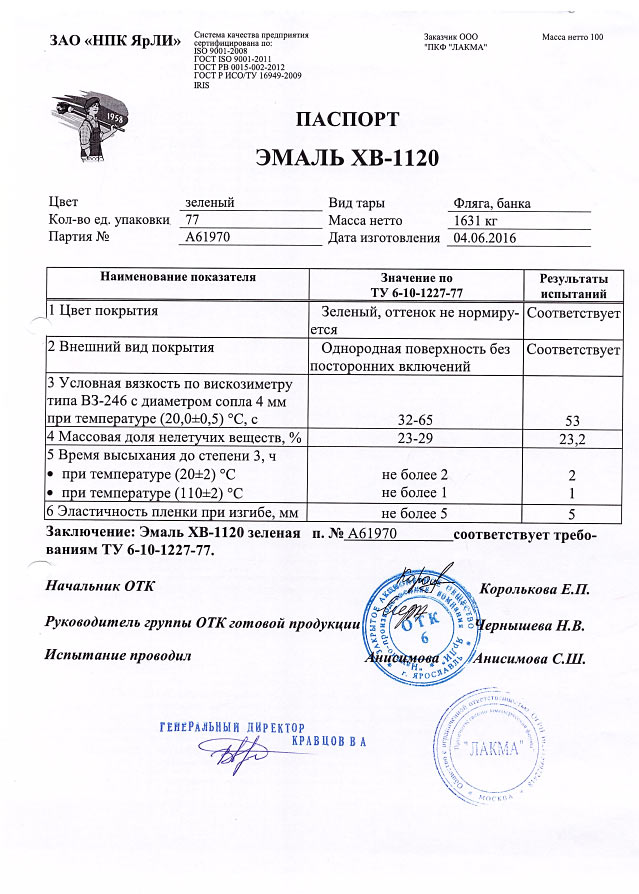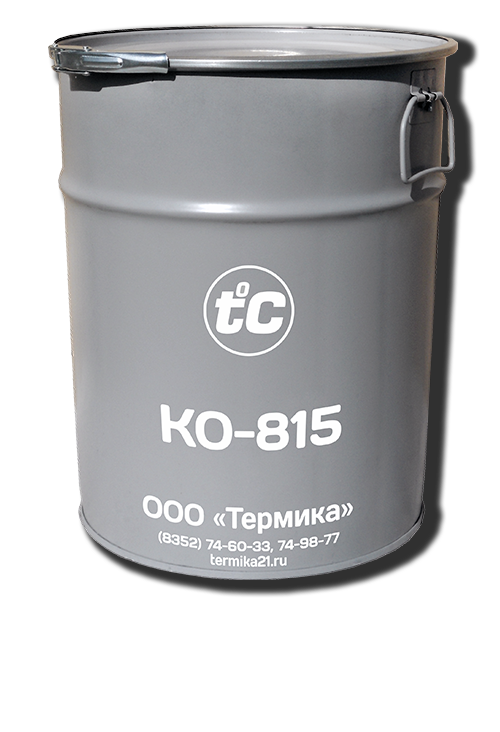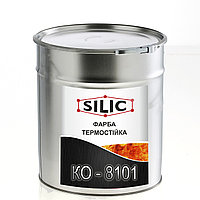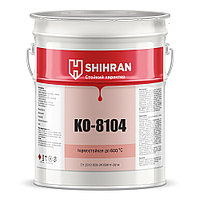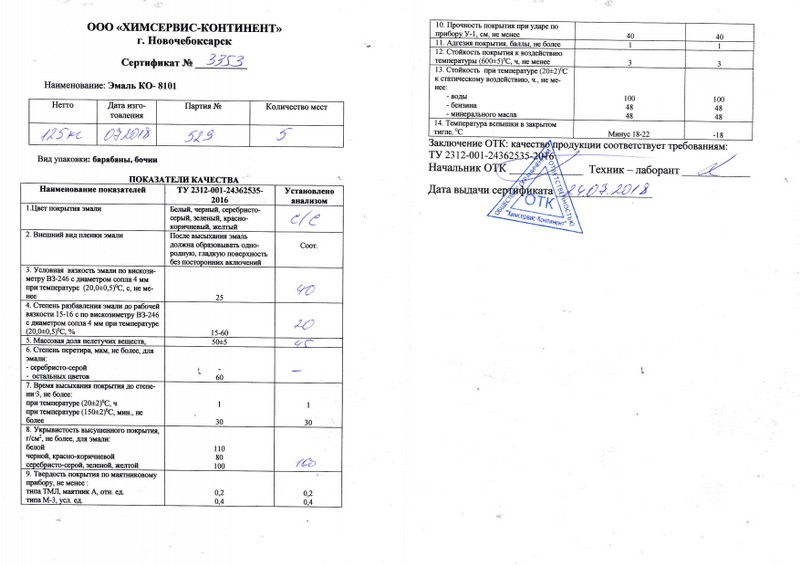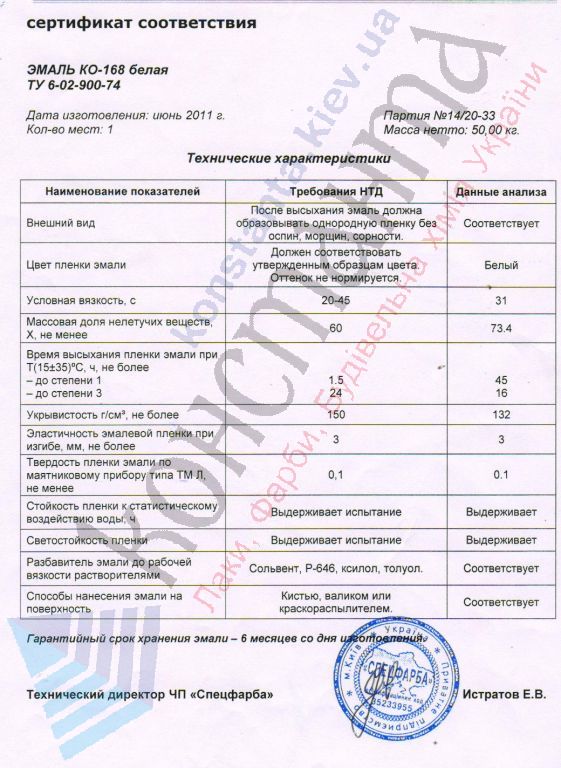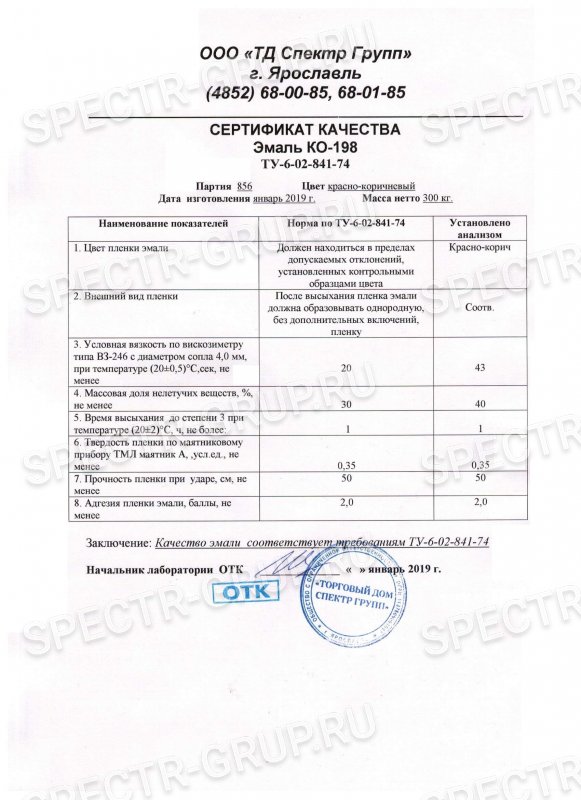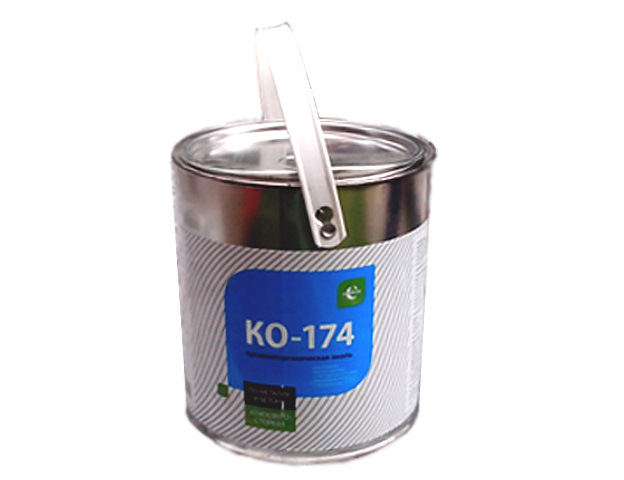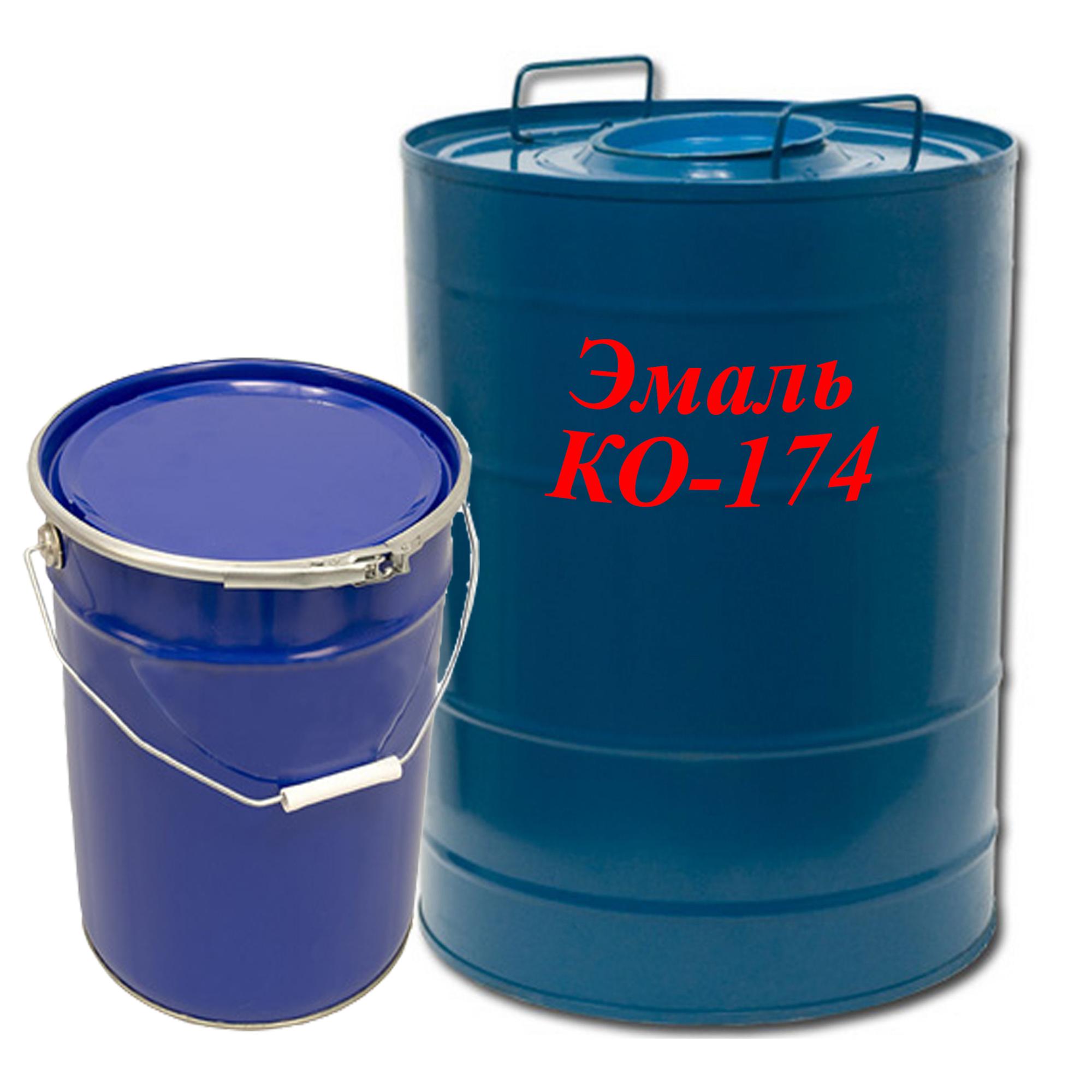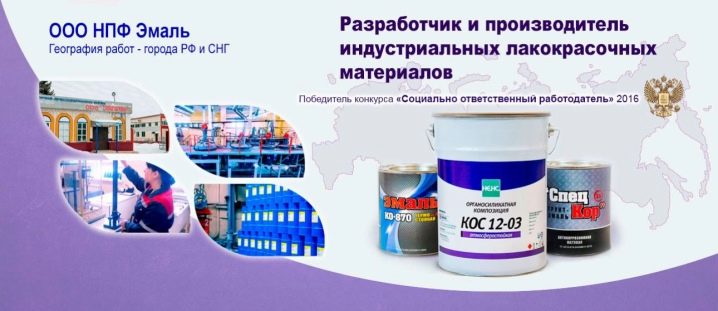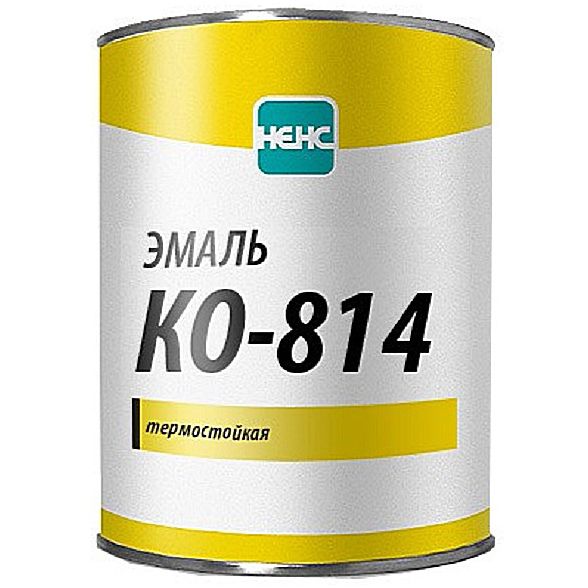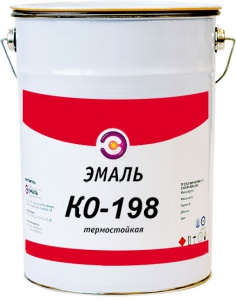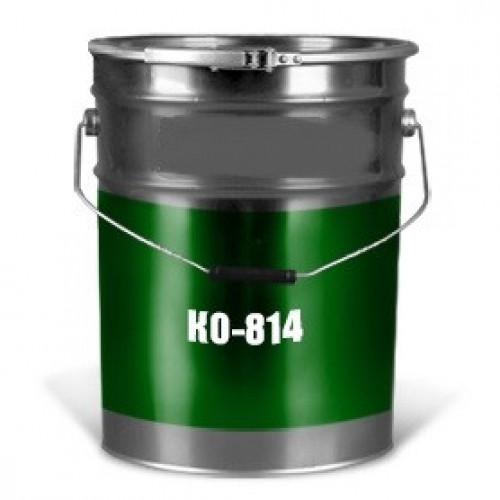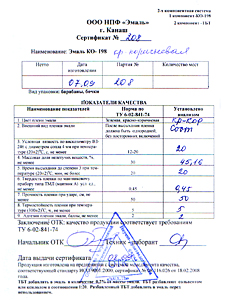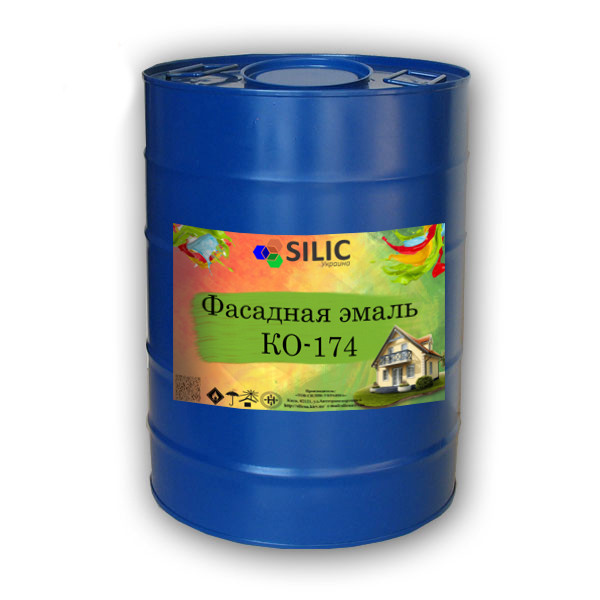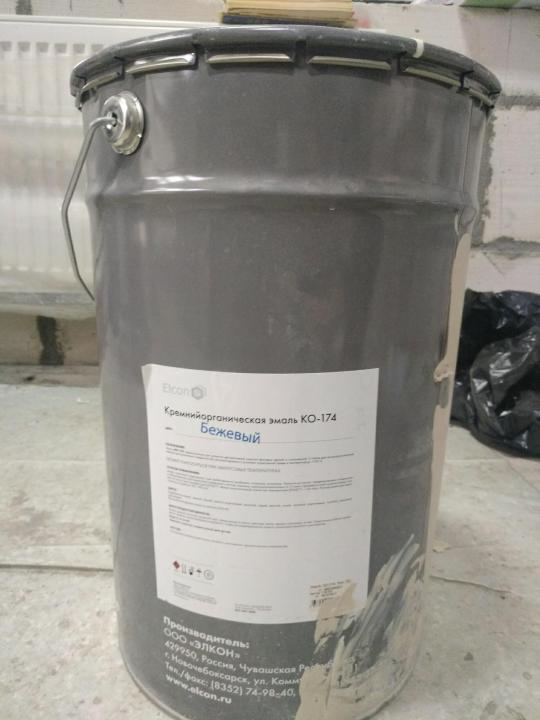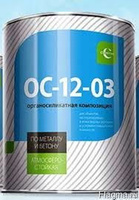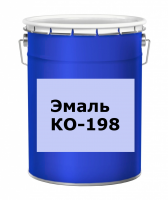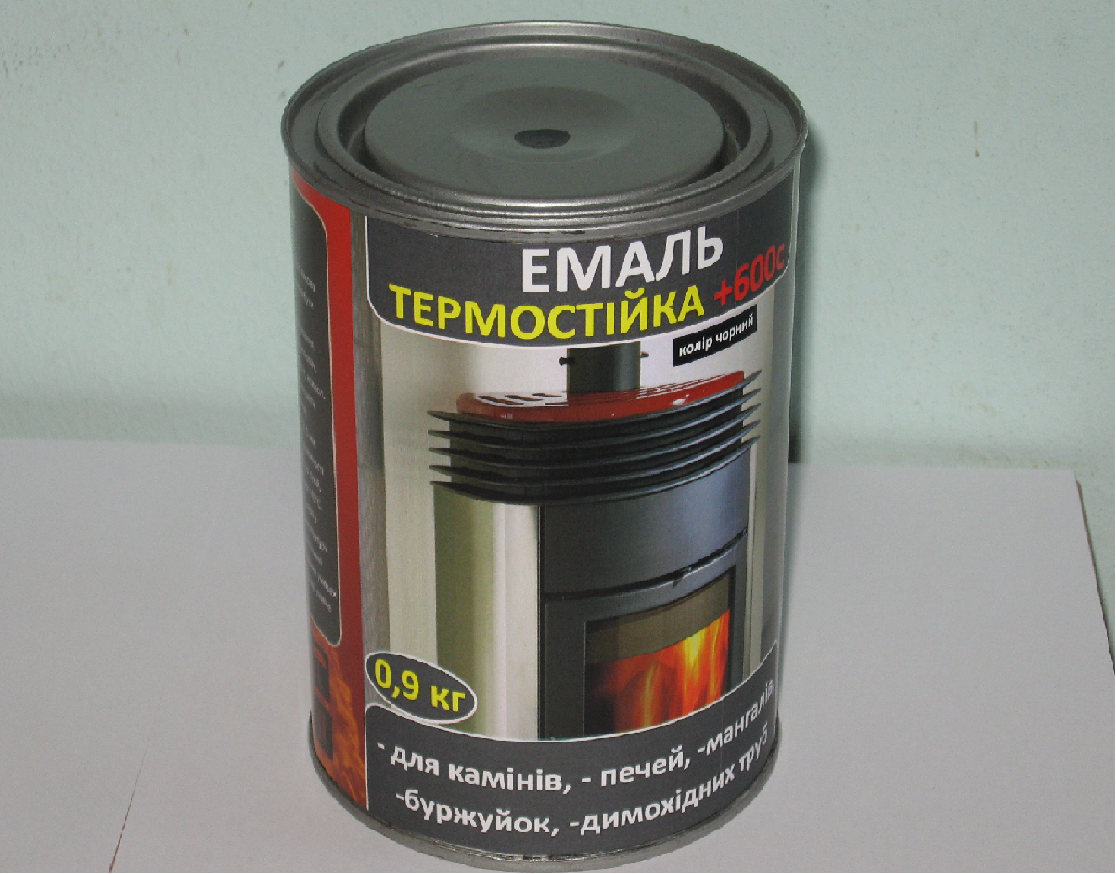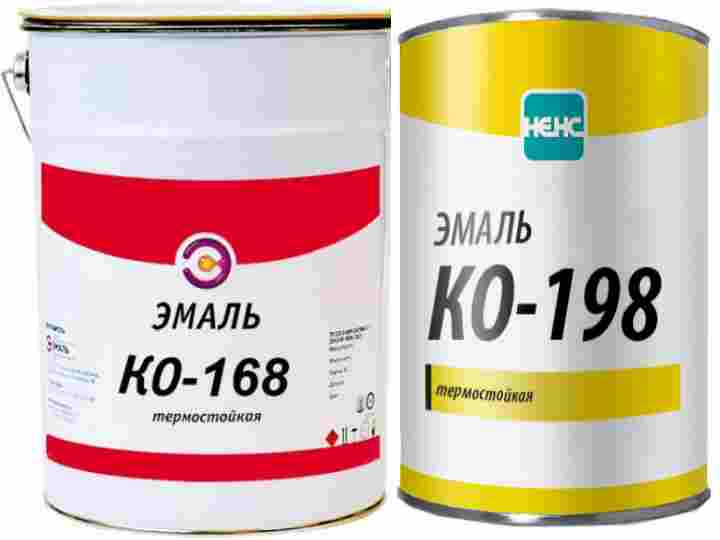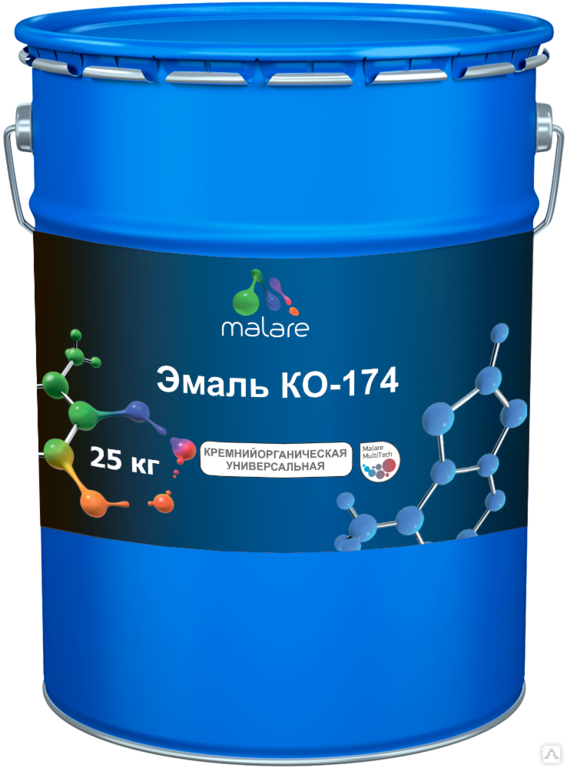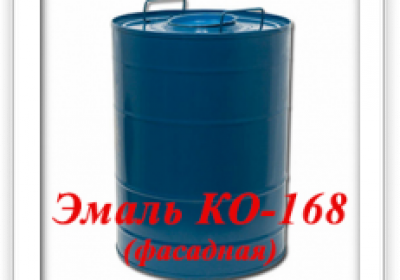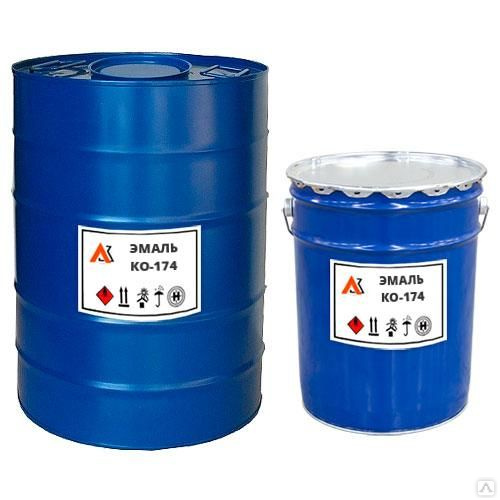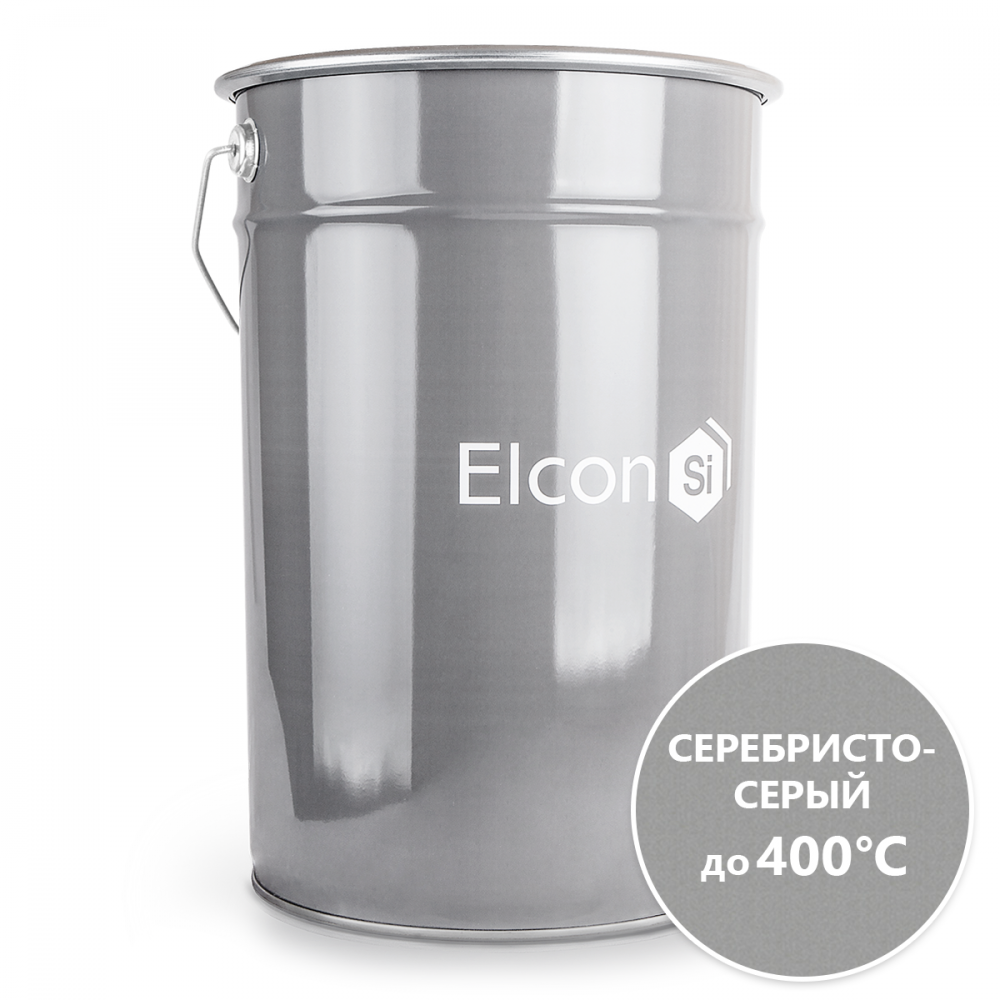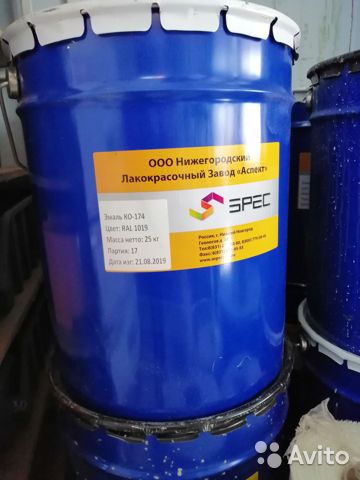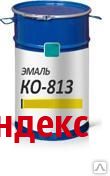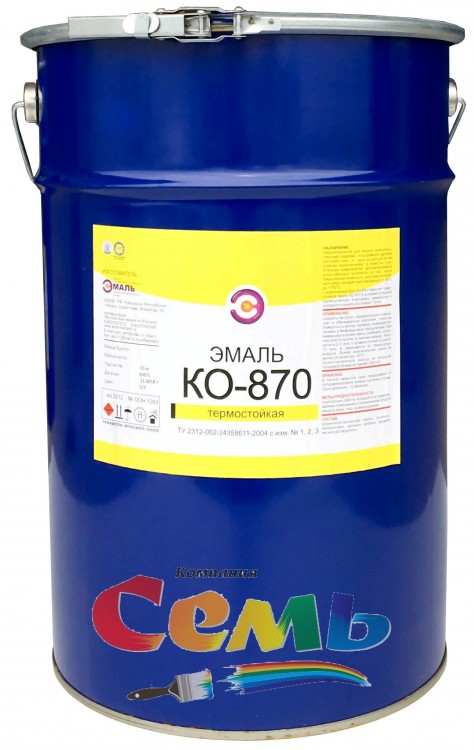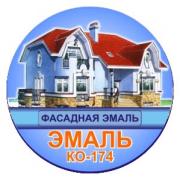Applications
Facade enamel KO-174 is used:
- for concrete surfaces;
- for silicate and ceramic bricks;
- for painting balcony railings;
- for painting walls plastered with gypsum plaster;
- for wood, asbestos cement, primed metal and galvanized surfaces;
- for painting the basement or foundation of the house;
- for repairing previously painted (cracked) surfaces.
Enamel KO-198 is used:
- to protect metal surfaces from the effects of various acids and water;
- for painting tanks and tanks in chemical plants;
- for painting metal containers exported to hot countries;
- for painting foundations and reinforced concrete structures and supports.
Application rules
It is very simple to work with KO-174 or KO-198 enamels. These paints and varnishes are completely ready for use. It is applied to a previously prepared base.
Preparatory work
Stages of preparation of enamel KO-174:
- Prepare the base. It is advisable to plaster the brick wall. The metal base can be primed with GF-021 primer. Old and cracked coatings must be completely removed. The enamel is applied only to a dry and smooth surface (preferably treated with a primer).
- Prepare paint. It is recommended to thoroughly stir the enamel before painting. Too thick paint can be diluted with solvent, xylene, thinner Р-5, 646.
Stages of preparation of KO-198:
- Preparation of the base. Before painting, it is recommended to clean the surface of dirt, grease, oil. For degreasing, you can use solvent, acetone, solvent. If there is rust on the metal, it must be removed.
- Preparation of paint. It is recommended to thoroughly stir the enamel before use so that there is no sediment at the bottom. If the paint is too viscous, it is advisable to dilute it with a solvent.
Staining technique
It is advisable to stand the mixed and diluted paint for ten minutes so that all air bubbles come out. When using a spray gun, a thinner solution is made. Large flat surfaces are painted with a roller or spray gun. Tint the edges and ends with a brush.
The recommended temperature for repair work is 20 degrees Celsius. Painting is carried out in at least 2 layers. During the staining process, you need to ensure that unpainted places do not remain. Wait at least 30 minutes before applying another layer of enamel. The painted surface dries completely within 24 hours.
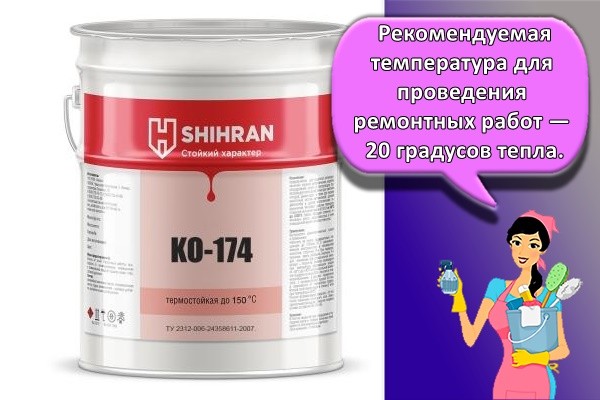
How to work with KO-174:
- the enamel is applied only on a dry basis in 2 layers;
- use a roller or spray gun for painting;
- the interval between the first and second layer should be at least 30 minutes;
- while the paint is applied or dries, care must be taken that moisture, dust or snow does not get on the base;
- in the sun, it is advisable to shade the painted surface;
- painting is best done at a temperature of 20 degrees Celsius;
- fully painted surface dries in 2 hours;
- at low temperatures the drying time increases;
- the total consumption for 2 layers is about 400-600 grams per 1 square meter.
How to work with KO-198:
- the surface must be dry and clean before painting;
- to apply paint to the base, a paint sprayer, roller or brush is used;
- the metal is painted in 2-3 layers, maintaining an interval for drying from 30 minutes to 2 hours;
- concrete and plastered surfaces are painted in 3 layers;
- within 20 minutes after applying the enamel to the base, you need to ensure that water and dust do not get on the painted surface;
- total paint consumption for 3 layers - about 500 grams per 1 sq. meter.
Scope of application
All organosilicon enamels are characterized by resistance to high temperatures. Enamels, depending on the incoming components, are conventionally divided into especially and moderately resistant to high temperatures. Organosilicon compounds adhere perfectly to all materials, be it a brick or concrete wall, a plastered or stone surface or a metal structure.
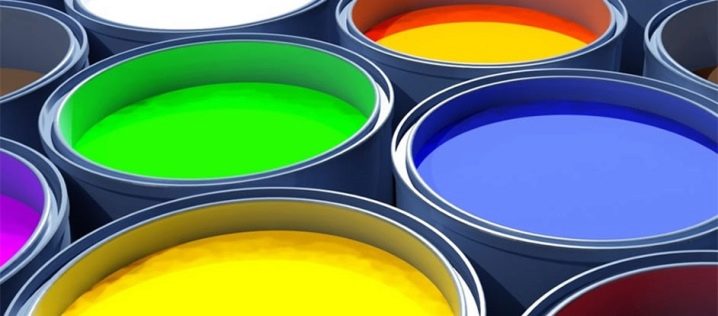
Most often, the compositions of these enamels are used for painting metal structures in industry. And as you know, industrial objects intended for painting, such as pipelines, gas supply and heating systems, are mostly held not indoors, but in open spaces and are exposed to various atmospheric phenomena, as a result of which they need good protection. In addition, the products passing through the pipelines also affect the material and therefore need special protection.

Enamels, related to limited heat-resistant types, are used for painting the facade surfaces of various buildings and structures. The pigments present in their composition, which give the color of the painted surface, are not able to withstand heating above 100 ° C, which is why limited heat-resistant types are used only for finishing materials that are not exposed to high temperatures. But it is worth noting that this type of enamel is resistant to the effects of various atmospheric phenomena, be it snow, rain or ultraviolet rays. And they have a considerable service life - subject to the dyeing technology, they are able to protect the material for 10 or even 15 years.
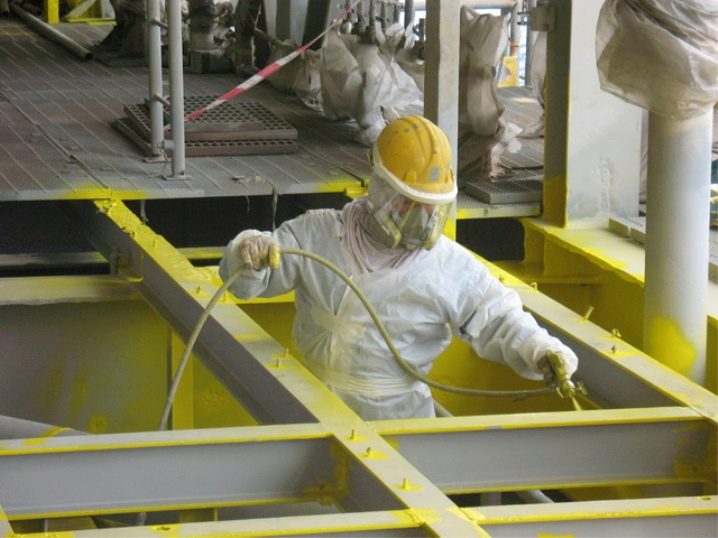
For surfaces exposed to high temperatures, humidity and chemicals for a long time, heat-resistant enamels have been developed. The aluminum powder present in the composition of these types forms a heat-resistant film on the surface of the painted material that can withstand heating at 500-600 ° C. It is these enamels that are used for painting stove, chimney and fireplace surfaces in the construction of houses.
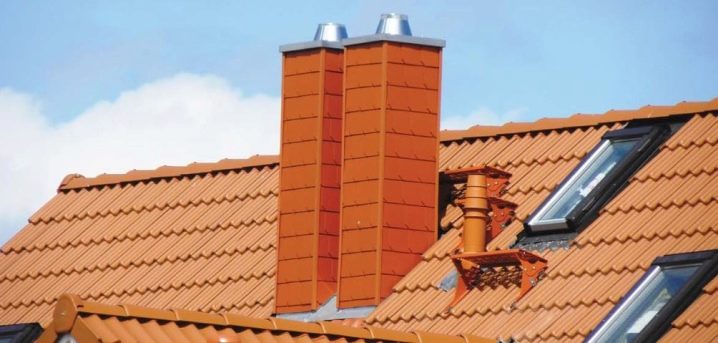
Safety measures during staining
Safety precautions in the process of using a protective composition should be based on the study of each characteristic of KO-174 enamel. So, information that the coloring agent contains xylene and other solvents indicates that the protective composition is quite fire hazardous and toxic.In terms of the degree of impact on the human body, this product is classified as a group of agents of the 3rd hazard class.
Enamel application should take place in a sufficiently ventilated area. Workers use protective gloves, a respirator, and in the case of pneumatic spraying, special goggles or a mask.
Surface treatment in closed rooms without the use of personal protective equipment is strictly prohibited. It is also unacceptable to use spark-generating tools, smoking during the dyeing process. In addition, fire extinguishing equipment must be present at the workplace.
In case of fire, use sand, foam and carbon dioxide fire extinguishers. Fire extinguishing with finely sprayed water is allowed.
How to apply correctly?
The admissible relative humidity is 80%. If the mixture is applied to the originally primed surface, it retains its qualities for 5-6 years.
It is advisable to degrease before applying this brand of enamel with white spirit.
For priming the original surface, soils of the categories are used:
- XC-010;
- XC-059;
- XC-068.
Painting is done with rollers and brushes, if you are not limited to manual methods of work, you can use pneumatic and vacuum sprayers. Regardless of the method of use, paints and varnishes are thoroughly mixed until a homogeneous solution is obtained. Solvents are used to bring the mixture to a working viscosity; it is also permissible to clean contaminated tools and other surfaces with them.
Before starting work with perchlorovinyl enamel, it is required to find out what the surface temperature is. Normally, it should be at least 3 degrees higher than the dew point.
The manufacturer's instructions indicate that the composition must be applied in a minimum of a couple of layers, the thickness of each of them is from 60 to 100 microns. Storage of enamel should be carried out in a hermetically sealed container, away from open fire and heat. Direct sunlight and paint moistening are not allowed.
Long-term storage can lead to:
- increasing the viscosity of the composition;
- sediment formation;
- cleavage of complex dyes.
When this period passes, the manufacturer is automatically released from any responsibility for the consequences of its use and further storage. Standard packing is 25 and 50 kg, which allows using one package to cover an entire apartment or an overall wall.
It is recommended to apply the enamel in three or four coats. If a varnish of the same brand is used, it is applied in a maximum of two layers. The durability and beauty of the outer coating (subject to technological regulations) are guaranteed.
Enamel XB-785 is used in painting:
- industrial baths;
- large capacity tanks;
- facilities under construction;
- machines and mechanisms that transfer the action of water and steam;
- equipment and technology designed for high or low air temperatures;
- electroplating industrial equipment;
- other technological machines and mechanisms;
- vehicles.
When working with the XB-785, it is necessary to wear a respirator, have a loaded and tested fire extinguisher and a box of sand ready nearby.
According to the operating data, the enamel easily tolerates contact with hydrogen sulfide. Static exposure to a solution of sodium chloride (at a concentration of 3%) does not lead to a deterioration in the quality of the coating in 48 hours; for mineral oil this figure is 72 hours.
You will learn how to enamel a bath in the following video.
Application technology
They begin work with the treatment of hard-to-reach areas, they are closed with a brush. Concrete, brick, plastered structures are covered in three layers, metal in two.
With pneumatic painting, they maintain a distance of 1.8-2.5 mm from the surface, the pressure is regulated at the level of 1.5-2.5 kgf. Using a pistol, maintain a distance of 20-30 cm.
The first layer should be dried for half an hour, if manual methods of application are chosen, then an hour and a half, if the temperature indicators are kept from +20 degrees. With the latter method, the paint dries completely in two hours, with sprayers in an hour.
 Using a pistol, maintain a distance of 20-30 cm.
Using a pistol, maintain a distance of 20-30 cm.
Pros and cons of using
The application of organosilicon enamels to the surface allows you to protect the material from many adverse factors, while maintaining the appearance of the painted surface. The composition of the enamel applied to the surface forms a protective film that does not deteriorate under the influence of both high and low temperatures. Some types of enamels of this type can withstand heating up to +700? C and sixty-degree frosts.
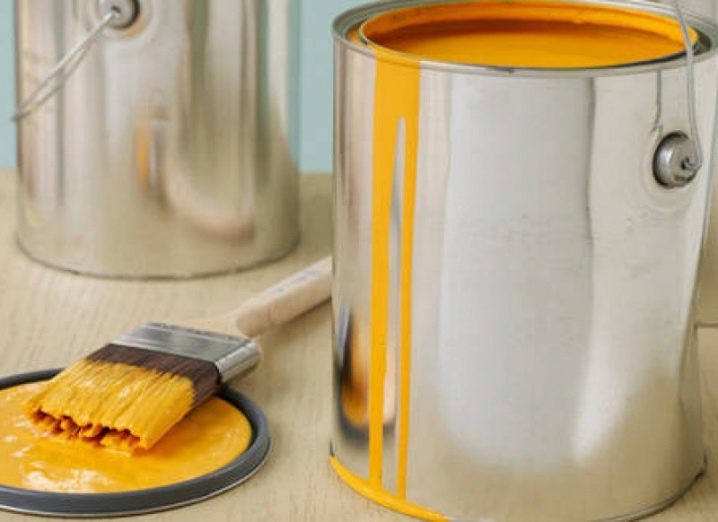
Thanks to the components included in the composition, all types of enamels are more or less resistant to ultraviolet rays, which allows them to be used for painting outdoor objects. The painted surface does not change the acquired shade over time. A wide color palette produced by the manufacturers of these enamels allows find the right color or shade without much difficulty.
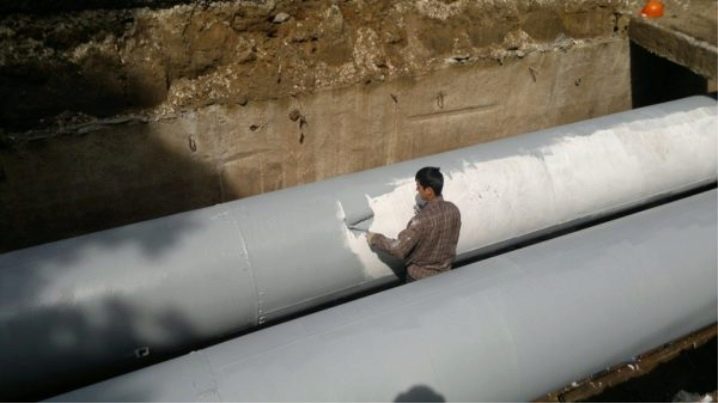
The surface covered with organosilicon enamel is able to withstand almost any aggressive external environment, and for metal structures it is completely irreplaceable. Anti-corrosion protection of the metal surface, provided by a layer of enamel, protects the structure for a long time. The service life of the enamel reaches 15 years.
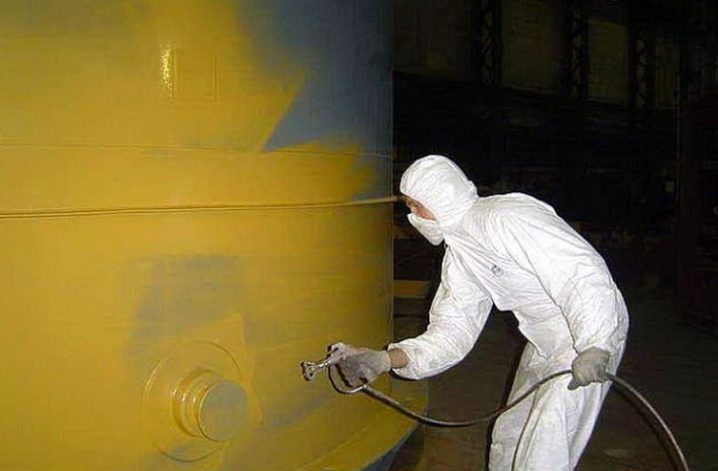
Any paint and varnish product, in addition to positive characteristics, has negative aspects.Among the disadvantages, one can note the high toxicity when the painted surface dries. Prolonged contact with the formulations contributes to the occurrence of a reaction similar to drug intoxication, therefore, when working with these formulations, it is better to use a respirator, especially if the staining process is carried out indoors.

Analogs of the material KO-174
It is difficult to find analogues of KO-714; it surpasses other similar agents in many properties. The combination of its protective properties allows the paint to be used in many products, and the resulting characteristics extend the service life of the painted surface many times over.
It is easy to find KO 174 on sale, the color range is rich, so it is suitable for many purposes. Consumption is relatively low, the use of pneumatic tools will help reduce it.
 It is difficult to find analogues of KO-714; it surpasses other similar agents in many properties.
It is difficult to find analogues of KO-714; it surpasses other similar agents in many properties.
Silicone enamel KO-174 is suitable for giving a pleasant appearance and creating a coating that will reliably protect various materials from natural factors. For this reason, the product has not lost its relevance for many years, both among professionals and ordinary buyers.
It is important to properly prepare the surface to be painted and buy enamel, checking the availability of a quality certificate, so as not to fall for a fake
Types and technical characteristics
All organosilicon enamels are subdivided into types depending on the purpose and properties. The manufacturers producing these enamels mark the packages with capital letters and numbers. The letters "K" and "O" denote the name of the material, namely organosilicon enamel. The first number, separated by a hyphen after the letter designation, indicates the type of work for which this composition is intended, and with the help of the second and subsequent numbers, manufacturers indicate the development number. Enamel color is indicated by full letter designation.

Enamel KO-88 is designed to protect titanium, aluminum and steel surfaces. The composition of this type includes varnish KO-08 and aluminum powder, due to which a stable coating (grade 3) is formed after 2 hours. The film formed on the surface is resistant to the effects of gasoline not earlier than after 2 hours (at t = 20 ° C). The surface with the applied layer after exposure for 10 hours has an impact strength of 50 kgf. The permissible bending of the film is within 3 mm.
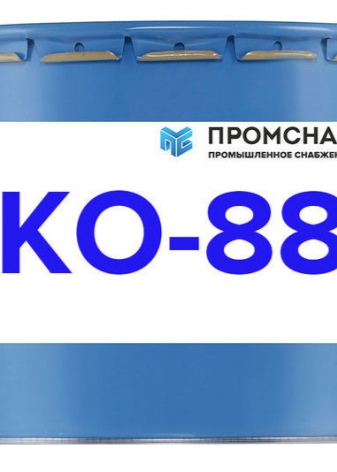

The purpose of KO-168 enamel is to paint front surfaces, in addition, it protects primed metal structures. The basis of the composition of this type is a modified varnish, in which pigments and fillers are present in the form of a dispersion. A stable coating is formed no earlier than after 24 hours. The stability of the film coating to the static effect of water begins after the same period at t = 20 ° C. The permissible bending of the film is within 3 mm.
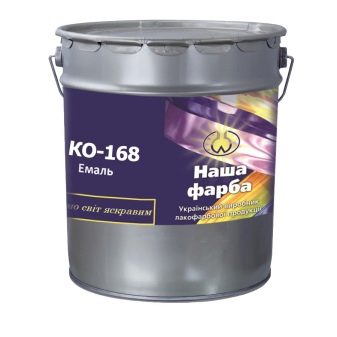
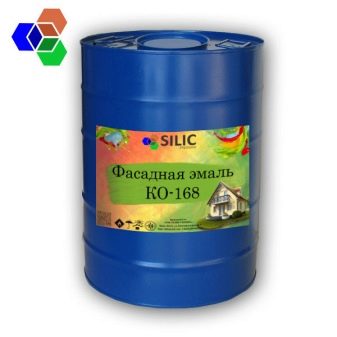
Enamel KO-174 performs a protective and decorative function when painting facades, in addition, it is a suitable material for coating metal and galvanized structures and is used for painting surfaces made of concrete or asbestos-cement. The enamel contains organosilicon resin, in which there are pigments and fillers in the form of a suspension. After 2 hours it forms a stable coating (at t = 20 ° C), and after 3 hours the thermal resistance of the film increases to 150 ° C. The formed layer has a matte shade, is characterized by increased hardness and durability.
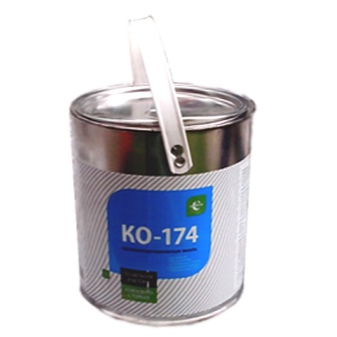
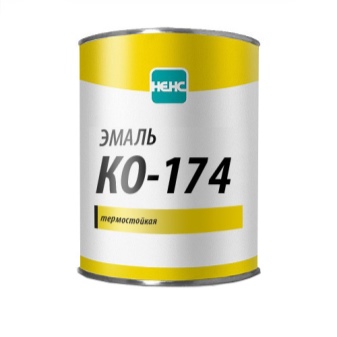
To protect metal surfaces that are in short-term contact with sulfuric acid or exposed to vapors of hydrochloric or nitric acids, enamel KO-198 was developed. The composition of this type protects the surface from mineralized ground or sea waters, and is also used for processing products sent to regions with a special tropical climate. A stable coating is formed after 20 minutes.
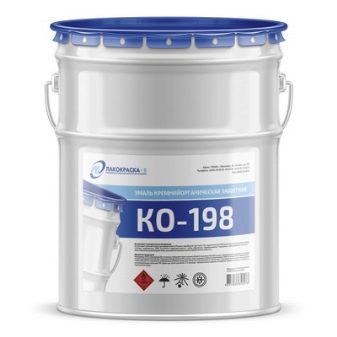

Enamel KO-813 is intended for painting surfaces exposed to high temperatures (500? C). It includes aluminum powder and KO-815 varnish. After 2 hours, a stable coating is formed (at t = 150? C). When applying one layer, a coating with a thickness of 10-15 microns is formed. For better protection of the material, the enamel is applied in two layers.
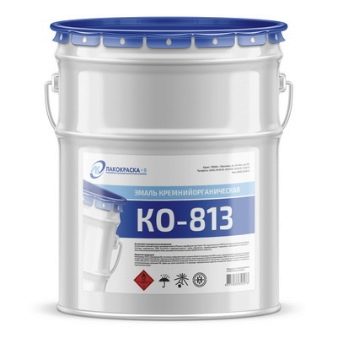
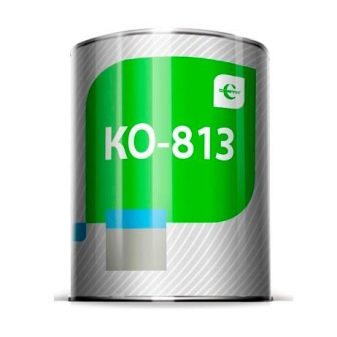
For painting metal structures exposed to high temperatures (up to 400 ° C), KO-814 enamel was developed, consisting of KO-085 varnish and aluminum powder. A stable coating is formed in 2 hours (at t = 20? C). The thickness of the layer is similar to that of KO-813 enamel.
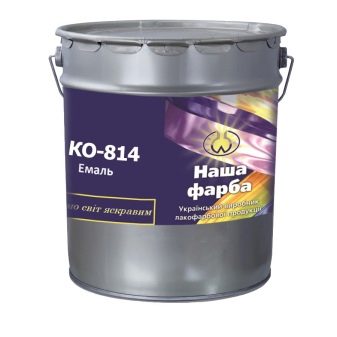
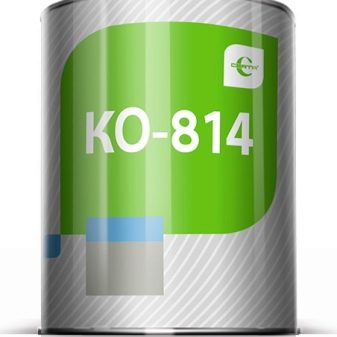
Enamel KO-818 has been developed for structures and products operating for a long time at t = 600 ° C. A stable coating is formed in 2 hours (at t = 200? C). For water, the film becomes impermeable not earlier than after 24 hours (at t = 20 ° C), and for gasoline after 3 hours
This type of enamel is toxic and fire hazardous, therefore, when working with this composition, special care is required.

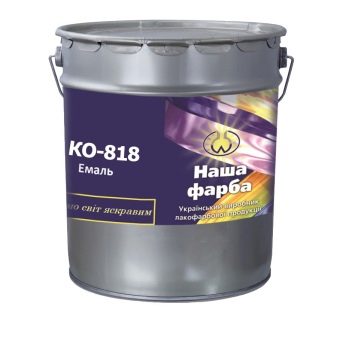
Enamel KO-983 is suitable for surface treatment of electrical machines and devices, parts of which are heated up to 180 ° C. And also with its help, the shroud rings of the rotors in turbine generators are painted, forming a protective layer with pronounced anti-corrosion properties. The applied layer dries until a stable coating is formed for no more than 24 hours (at t = 15-35? C). The thermal elasticity of the film coating (at t = 200 ° C) is maintained for at least 100 hours, and the dielectric strength is 50 MV / m.

Organosilicon enamel KO-814
Before starting work with such paint, craftsmen should be familiar with the safety rules for working with organosilicon enamel. The technical staff is simply obliged to monitor the correct adherence to work with paint
The color range of facade paints.
The main difference of this paint from silicone and other paint materials is the fact that it does not contain carbon compounds, but the alternation of fastenings of silicon and oxygen atoms. It is known that such a compound is very strong in a chemical reaction. It is worth noting such a property of organosilicon enamel as heat resistance, due to which all its physical, mechanical and decorative and protective properties are preserved.
Consequently, when carrying out construction or repair work of most industrial facilities, these organosilicon dye materials are mainly used, which are capable of maintaining their operational parameters at various temperature conditions for a long period. In this case, the price is not a hindrance.
Silicone paint for building facades.
Enamel brand KO-811
KO-811 paint is included in the group of organosilicon paints and varnishes. It is prepared on the basis of a solution of organosilicon varnish and various pigments - the color is selected depending on the requested color of the material. Two types of enamel are produced - KO-811, KO-811K. The first specified material in shades is:
- black;
- Red;
- green.
KO-811K is enriched with stabilizing additives and is produced in a wider range of colors. These are white, red, blue, olive, brown, blue, steel, yellow.
Enamels have a common property - the purpose of both is to protect steel, aluminum, titanium products against corrosion, which operate at temperatures up to +400 degrees. Also, coatings from these materials can be used in harsh climates - they can withstand temperatures up to -60 degrees.
Description
Enamels under the KO-811 brand are distinguished by high oil resistance, petrol resistance, moisture resistance, and tolerate changes in atmospheric conditions. Most often they are used for painting heating systems, furnaces, oil pipelines. The products are suitable for application to any metal products exposed to aggressive external influences. If necessary, you can use them to cover reinforced concrete, concrete, asbestos-cement structures.
Specifications
After drying, KO-811 forms a smooth film without foreign inclusions, pockmarks, wrinkles, craters. The main technical characteristics are as follows:
| Index | Enamel KO-811 | Enamel KO-811K |
|---|---|---|
| Nominal viscosity according to the VZ-4 viscometer at a temperature of +20 degrees | 12-20 s | 13-20 s |
| Fraction of dry sludge (non-volatile substances) | 30-45%, depending on color | 49-55%, depending on color |
| Drying period at +20 degrees | — | 2 hours |
| Drying period at +150 degrees | — | 2 hours |
| Drying period at +200 degrees | 2 hours | — |
| Flexural elasticity of the coating | 3 mm | 3 mm |
| Layer hardness according to the device M-3 | 0.5 cu | 0.5 cu |
| Heat resistance at a temperature of +440 degrees | 5 o'clock | 5 o'clock |
| Water resistance at a temperature of +20 degrees | 24 hours | 24 hours |
Consumption per 1 sq. m of both funds for 2 layers - 100 g / m2, each layer in thickness is 40-50 microns.
Application
Before applying the material, the surface must be cleaned of dirt, grease, dust, salts, other contaminants and remnants of old coatings. After that, degreasing is performed using a solvent, acetone. Rust is removed with sandpaper or sandblasting machines. If the products are not supposed to be used at temperatures above +100 degrees, it is permissible to process only with a rust converter.
Before application, the material is diluted with xylene, toluene. In white enamel KO-811K, you can add up to 70% of the solvent, the rest is diluted by 30-40%. After mixing, the paint is allowed to stand for 10 minutes so that air bubbles disappear. For KO-811K, a semi-finished product is combined with a stabilizer 100: 6, the finished product is used within 24 hours.
Application methods - pneumatic spray, airless spray. The nozzle is not more than 2.5 mm, the temperature at the workplace is 30 ... +40 degrees. The enamel is applied in 2-3 layers, each is allowed to dry for 2 hours.
During the operation of the equipment, the final curing of the material will occur. If products are supposed to be used in an aggressive chemical environment, preliminary hardening is required at +250 degrees for 20 minutes.
Application Tips
Paints with the use of organosilicon compounds are applied to the surface to be painted in compliance with the painting technology:
Surface preparation. If the surface is metal, dirt, dust and rust must be removed. After removal, proceed to degreasing the surface with solvents. The surface is cleaned either manually or mechanically.
After applying the primer mixture, allow the surface to dry completely, since silicone paint should not be applied to a damp surface.
Preparation of coloring compositions before application. Organosilicon compounds are sold ready-to-use. But if for some reason the mixture turned out to be too thick, it is diluted with toluene and xylene, after which the solution is thoroughly mixed.
The most important parameter to control when applying enamel to a surface is the film thickness. The best option is 40-50 microns. For quick drying, experts advise using a blower or infrared heaters.
For tips on using silicone enamel, see the following video.
Main areas of application
High technical characteristics of KO-174 organosilicon enamel make it possible to use it in the most difficult conditions. Most often, the coating is used by manufacturers of metal structures in order to ensure long-term preservation of the product's appearance.

Also, the composition is actively used in the following areas:
- Transport construction. The protective coating prevents corrosion on the elements of overpasses, bridges, overpasses, metal and concrete supports, girders, etc.
- Energy industry. The coating protects metal structures and facades exposed to temperatures in the range of -60 ... + 150 ° C.
- Metallurgical industry. Enamel is used for anti-corrosion treatment of industrial buildings and structures.
- Chemical industry.Compositions of this type are used to give a presentable appearance to structures made of metal and concrete exposed to an aggressive environment.
- Agro-industrial complexes and civil engineering. Protective composition KO-174 is used for anti-corrosion treatment and decorative painting of facades and containers for various purposes.
Since organosilicon enamel (KO-174) of different colors can be purchased at any specialized store, the composition is very popular in private construction. This is facilitated by the fact that the enamel can be applied in the most extreme conditions: in the temperature range -30 ... + 40 ° C.
Scope of application and technical characteristics
Designed for painting metal structures exposed to short-term exposure to sulfuric acid, vapors of nitric and hydrochloric acids, saline ground water, sea water, atmospheric conditions. It is also used to protect products supplied to countries with a tropical climate. Recommended for painting foundations and the foundation part of reinforced concrete overhead supports.
Shelf life is 12 months. Each new batch has its own quality certificate. Paints and varnishes are produced in accordance with the requirements of GOST and TU.
Metal surfaces are painted in 2-3 cross layers with intermediate drying of 0.5-2.0 hours, depending on the ambient temperature. Concrete, asbestos-cement, plastered, cement-sand surfaces are painted in three layers. Drying time - 20 minutes at a temperature of 20C.
KO-198
KO-198 paint provides protection not only for metal, but also for coatings from other materials. The protective film has the following properties:
- Protects against saline solutions;
- Protects against acids: nitric, hydrochloric, sulfuric.
Used for painting equipment in chemical plants. The enamel has anti-corrosion and frost-resistant properties. Rails, foundations, metal supports are actively painted. Suitable for tropical climates. Available in seven colors: red, black, blue, yellow, brown, white, gray.
The main property is the protection of metal structures from corrosion, as well as aggressive chemical attack.
KO-174
The main difference between KO-174 is used only in cold climatic zones. Only the facades of structures are painted. The enamel has excellent adhesion. They are moisture resistant. The resulting film is heat-resistant. Withstands temperatures up to +150 C. It does not lose color saturation when exposed to sunlight. Withstands 90 freeze and thaw cycles. The surface must be prepared in advance (cleaned from dirt, degreased). The paint is applied with a brush, spray gun, roller.
Enamel KO-174 is intended for obtaining a protective and aesthetic coating of materials and parts, structures. It can be concrete, brick, wood, asbestos cement. Painting can be done on panels made of heavy concrete with a moisture content of up to 9%, expanded clay concrete - up to 14%. The enamel has excellent hydrophobicity, resistance to UV radiation, frost and moisture resistance while maintaining good vapor and air permeability.
Application Tips
The process of painting materials with an organosilicon composition does not particularly differ from painting with other types of enamels, varnishes and paints. As a rule, it consists of two stages - preparatory and main. The preparatory work includes: mechanical cleaning from dirt and remnants of the old coating, chemical surface treatment with solvents and, in some cases, a primer.
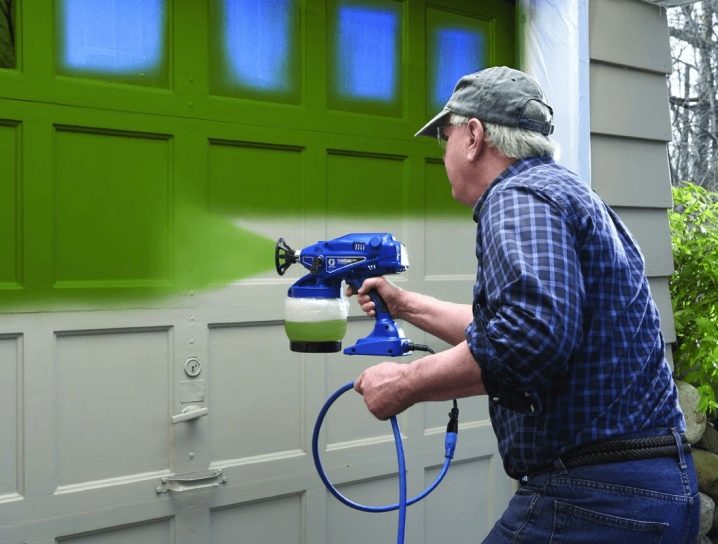
Before applying the composition to the surface, the enamel is thoroughly mixed, and when thickened, it is diluted with toluene or xylene. In order to save money, you should not dilute the composition too much, otherwise the film that appears after drying on the surface will not correspond to the declared quality, the resistance indicators will be reduced.Before applying, make sure that the prepared surface is dry and that the ambient temperature matches the requirements specified by the manufacturer.
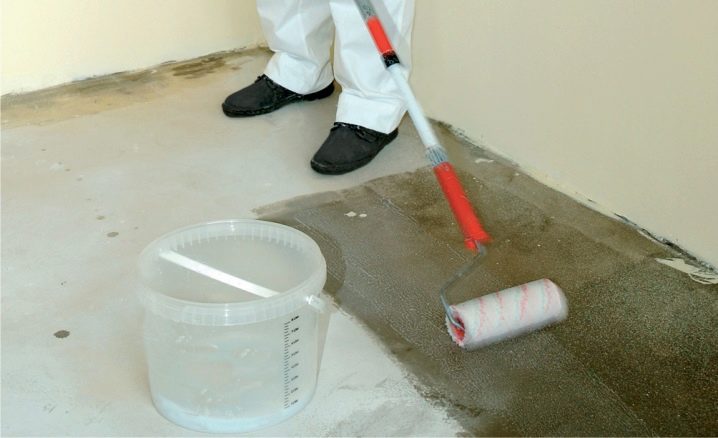
In order for the surface of the processed material to acquire all the characteristics inherent in organosilicon enamel, it is necessary to cover the surface with several layers. The number of layers depends on the type of material. For metal, 2-3 layers are enough, and concrete, brick, cement surfaces must be treated with at least 3 layers. After applying the first layer, it is imperative to wait for the time indicated by the manufacturer for each type of composition, and only after complete drying, apply the next layer.
For an overview of KO 174 enamel, see the next video.
Staining technique
Enamel KO-174 is applied by pneumatic spraying, using a roller or brush. Coloring is carried out in at least 2 layers, the temperature during work is from –30 to +40 degrees, the humidity is up to 80%. If the temperature is below zero, you need to make sure that it is 3 degrees or more above the dew point. When carrying out work using a spray gun, choose a device with a nozzle of 1.8-2.5 mm, set a pressure of 1.5-2.5 kgf / sq. cm, the distance to the base is 20-30 cm.
The brush is usually used to paint the edges, ends, seams. Metal coloring should be done with cross layers, each drying time is 30–120 minutes, the degree of drying is checked "for touch". If the temperature is below zero, the drying time is extended 2-3 times. Substrates from other materials are painted in 3 layers, each must dry within 2 hours. Final drying of any surface takes at least 24 hours.
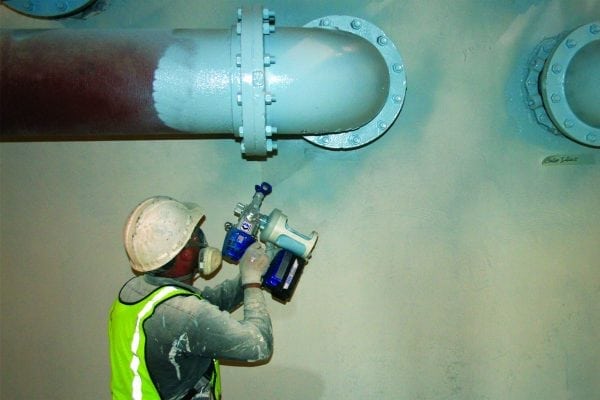
Enamel KO-198 has few differences in staining technique. The only difference is in the method of application - the spray gun is mainly used (pneumatic spraying). The parameters of humidity, temperature, spray gun settings are similar. If the product is small, the dipping method can be used. The roller and brush are used only for hard-to-reach areas. Other important details in the process of work:
- Metal products are painted on 2-3 cross layers, each dried for 20 minutes, the final - 4 hours at a temperature of +20 degrees, humidity up to 65%.
- The coating dries to grade 3 in 4 hours, cures completely and hardens in 24 hours.
Outdoor enamels
The leader in durability and strength, perhaps, are organosilicon enamels. The brands of enamels KO-42, KO-855, KO-174 are produced in a wide variety of shades and provide good protection against external influences.
Alkyd enamel (PF and GF brands) is used for painting wooden and metal surfaces. It provides a hard, durable glossy film after drying. Most alkyd topcoats have a drying time of 24 hours, but fast drying paints are also available that dry in 1 hour.
A very strong and durable semi-matte coating is provided by XB enamel, which in its basis contains perchlorovinyl and glyphthalic resins. For painting the plastered concrete or brick surface of the facade of the building, it is recommended to use the enamel XV-161. This paint is highly resistant to atmospheric precipitation.
Enamel XB-0278 is used for painting prepared metal and wood surfaces for outdoor use. It is applied to the surface by airless or pneumatic spraying.
For the same purposes, as well as for painting concrete and reinforced concrete building structures, KhV-16 enamel is used. In addition, this enamel can be used to decorate fabrics. This type of enamel is applied by spraying.
Due to its unique durability, XB-785 enamel is used in a complex coating to protect equipment, metal products and reinforced concrete building structures from the aggressive effects of concentrated inorganic acids, alkalis, salts and gases, as well as from prolonged contact with water at temperatures no higher than 60-65 оС. Also applied by spraying. In addition, polyurethane enamel is used for the same purposes.Metal enamel is applied to galvanized iron, aluminum and ferrous metals.
Enamel NTs-132 dries very quickly, perfectly protects against the damaging effects of dampness and direct sunlight. The basis of NTs-132 enamel is nitrocellulose. It is used for painting wooden and pre-primed metal products, as well as for any outdoor work. NC enamel is applied to the surface by spraying technology. Before starting work, it is recommended to clean the surface well of dirt, dust, grease, technical lubricants. Clean metal products from rust and be sure to prime them.
Interior materials
I must say that this division into materials for external and internal decoration is rather arbitrary, since almost all enamels for external work can also be used indoors. But it is better and cheaper to use special enamels for this purpose. Alkyd enamels and some others are perfect for this. We will talk about them.
EP enamel is prepared on the basis of epoxy resin. EP-140 enamel coating is used for painting pre-primed surfaces made of steel, magnesium, copper and its alloys, as well as titanium and aluminum amalgams. All paint components are mixed immediately before use. It should be remembered that epoxy enamel requires special storage conditions - it should be stored in an airtight container, out of direct sunlight.
GF-92 enamel based on glyphthal varnish is used for windings of electrical machines. There are two types of GF enamel. For the processing of stationary parts of the windings, GF 92 HS enamel is used - cold drying enamel, and GF 92 GS hot drying enamel is used for both stationary and rotating parts of the winding.
Enameled wire (enameled wire) is used directly in the coils of electrical appliances. It is coated with an electrical insulating varnish based on modified polyester resins, due to which the wire has high thermal properties and great flexibility.
Rust enamel will help to paint a metal surface covered with corrosion products. For these purposes, a unique product has been created - a primer-enamel. This is a triple action agent - enamel rust primer. It is designed to protect metal units exposed to aggressive gases and vapors of an industrial atmosphere.
Heat-resistant enamel is used for painting surfaces used at high temperatures. Such enamels are used for painting pipelines, boilers, heating systems, railway tanks, etc. Heat-resistant enamels form coatings of increased hardness and durability.

